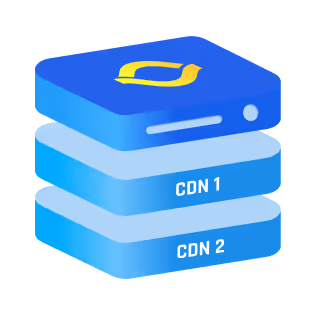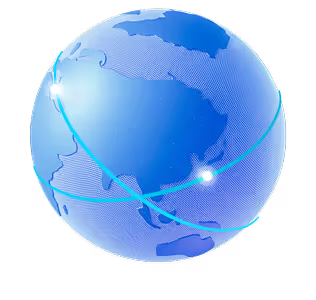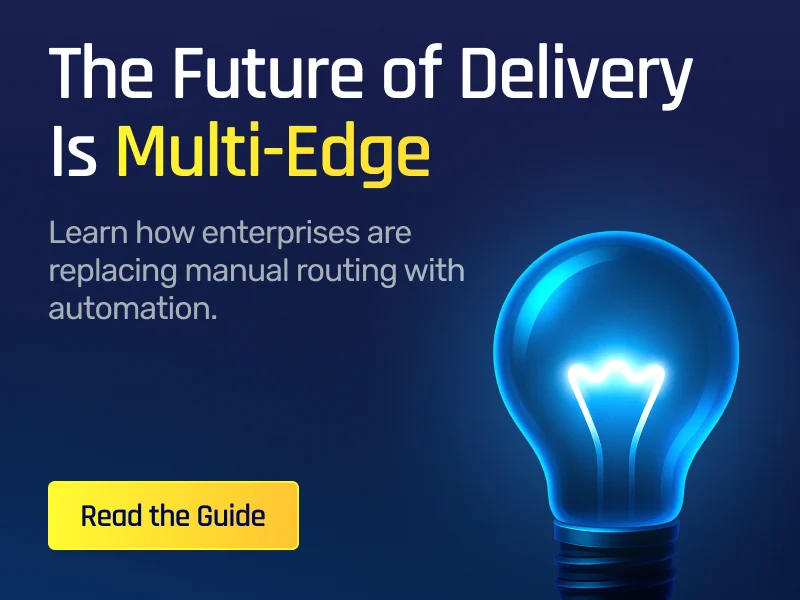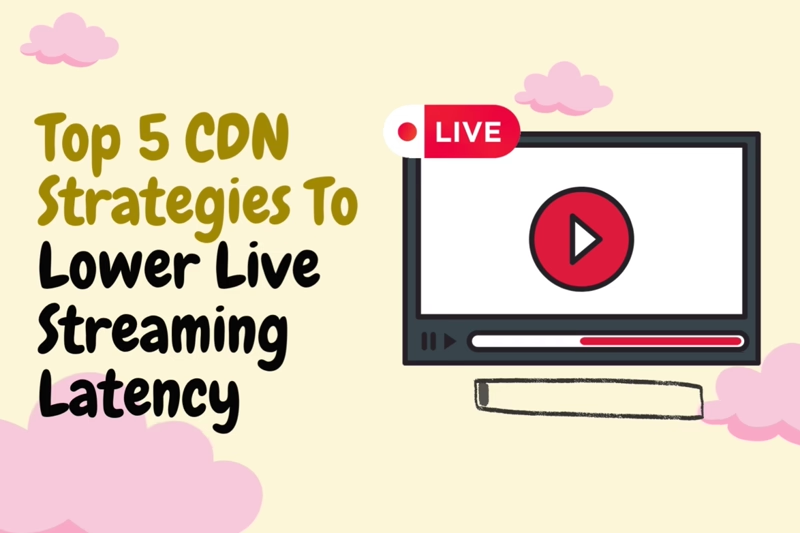Best 8 Cloudflare CDN Alternatives in 2026
Explore the best Cloudflare CDN alternatives for 2026, from faster streaming options to platforms offering more control and flexibility.

Looking for Cloudflare alternatives? You're not alone. While Cloudflare dominates the CDN market with its generous free tier and integrated security features, it's not the perfect solution for every use case. Maybe you need better video streaming capabilities.
Maybe you're looking for deeper cloud integration. Or perhaps you want more developer control over your edge infrastructure. Either way, this article has you covered!
Why Look Beyond Cloudflare?
Let's be clear - Cloudflare is popular for good reasons. They revolutionized the CDN industry by making enterprise-grade features accessible to everyone. Their free plan includes DDoS protection, a global CDN, and SSL certificates. That's incredible value.
But here's where things get interesting. Cloudflare's one-size-fits-all approach doesn't work for everyone:
- Limited video features: While Cloudflare Stream exists, it's a separate paid product. Many alternatives include robust video delivery in their core offering
- Support limitations: Free and Pro plans only get ticket support, which can be slow
- Feature restrictions: Advanced features like image optimization, load balancing, and detailed analytics require expensive plans
- Performance gaps: In some regions and for specific use cases, specialized providers can outperform Cloudflare
- Pricing surprises: While the free tier is generous, costs can escalate quickly at scale
So if you're hitting these limitations, exploring Cloudflare alternatives for network security and content delivery makes perfect sense.
{{promo}}
How We Evaluated Cloudflare Alternatives
Before we start throwing logos at you, it’s worth explaining the lens we used to compare Cloudflare against other CDNs.
For this guide, we focused on nine key dimensions:
- Global performance & footprint
Not just “how many PoPs,” but where they are, how close they sit to real users, and how well they handle traffic in historically tricky regions (LATAM, APAC, Africa, Middle East). - Edge compute & programmability
Can you run logic at the edge (auth, personalization, rewrites, A/B testing)? In which languages? How painful are cold starts, debugging, and versioning? - Security stack (WAF, DDoS, bots, APIs)
We looked at whether each provider offers:- A modern WAF with good managed rules
- DDoS protection suited to volumetric attacks
- Bot management and API-specific protections
- TLS features like mTLS, HTTP/3, and automated certificate
- DNS & traffic steering
Some providers treat DNS as an afterthought; others make it a first-class product. We considered:- Authoritative DNS performance and uptime
- DNSSEC support
- Geo/latency-based routing and health checks
- How well DNS integrates with load balancing and multi-region setups
- Video & media capabilities
For teams streaming video or serving big media libraries, we looked at:
Built-in VOD/live workflows- Transcoding and adaptive bitrate streaming
- Player integrations, DRM, and storage options
- Pricing transparency & total cost at scale
Cloudflare’s free tier is fantastic… until it isn’t. We evaluated:- How easy it is to predict your bill
- Whether pricing is self-serve vs. “talk to sales”
- Where surprise line items show up (egress, requests, WAF, logs, support)
- Support model & SLAs
Ticket-only vs. 24/7 chat vs. named account teams. We also note who’s realistically accessible to a startup versus who only makes sense when you already have an enterprise budget. - Developer experience
Are there good docs, CLIs, Terraform providers, real-time logs, and sane dashboards? Or will your team be spelunking through five different UIs and three different logging systems? - Ecosystem fit & lock‑in risk
Finally, we looked at how tightly each CDN ties you into a single cloud or vendor, and how easy it is to adopt multi‑CDN or switch later if your needs change.
Every provider in this list brings something special to the table. The goal of this article is to help you map those strengths to your actual workload, not just crown a single “winner.”
The 8 Best Cloudflare Alternatives
When comparing Cloudflare alternatives 2026, it helps to zoom out and stack features side by side, not just read marketing pages.
*Prices are indicative and simplified for comparison; large customers usually negotiate custom contracts with these Cloudflare competitors.
To find the best Cloudflare alternatives for your specific use case, you need to look beyond marketing claims. Here are the actual best ones:
1. Akamai
Akamai literally invented the modern CDN. Founded in 1998 by MIT researchers trying to solve the "World Wide Wait," they've built something extraordinary.
We're talking about 365,000+ servers embedded deep inside ISP networks across 135 countries. No other CDN comes close to this level of infrastructure penetration.
Key features
- Adaptive Media Delivery: Industry-leading video streaming that powers many of the world's largest broadcasters. Handles everything from 4K VOD libraries to massive live events with millions of concurrent viewers
- EdgeWorkers: Run JavaScript at the edge across their massive network. More mature than many edge compute platforms with proven scale
- Prolexic DDoS Protection: Dedicated scrubbing centers with 20+ Tbps capacity and a 24/7 Security Operations Center. This is military-grade protection
- Advanced Security Suite: App & API Protector combines WAF, bot management, API security, and client-side protection in one integrated platform
- Real-time Analytics: Comprehensive dashboards and APIs for monitoring performance, security events, and user behavior
Pricing: Here's where things get complicated. Akamai doesn't publish prices; everything is custom quoted after a sales engagement.
- Minimum contracts typically start at 12 months
- Bandwidth pricing can range from $0.035-$0.049 per GB for very large volumes
- Security features like Prolexic are expensive add-ons
- Total monthly costs often exceed $10,000 for meaningful usage
Best for: Fortune 500 companies, global media conglomerates, and any organization where performance and reliability justify premium pricing. If you're streaming the Super Bowl or protecting a major bank's infrastructure, Akamai is the gold standard.
2. Amazon CloudFront
Amazon CloudFront launched in 2008 as the natural extension of AWS's cloud dominance. What started as a simple way to accelerate S3 content has evolved into one of the world's largest and fastest CDNs.
With over 600 edge locations and deep integration with the entire AWS ecosystem, CloudFront has become the default choice for organizations already invested in Amazon's cloud.
Key features
- Deep AWS Integration: Native connections to S3, EC2, Elastic Load Balancing, AWS Shield, WAF, and more. Configure everything through the same console and APIs
- Massive Global Network: 600+ Points of Presence, 13 regional edge caches, and thousands of direct network connections ensure low latency worldwide
- Lambda@Edge: Run sophisticated Node.js or Python functions at the edge for A/B testing, authentication, dynamic content generation, and more
- CloudFront Functions: Lightweight JavaScript for simple transformations with sub-millisecond cold starts - perfect for header manipulation and URL rewrites
- Origin Shield: Additional caching layer that protects your origin from traffic spikes and improves cache hit ratios
- Comprehensive Security: Integrated AWS Shield Standard (free DDoS protection), optional Shield Advanced, and AWS WAF for application security
Pricing: CloudFront uses AWS's standard pay-as-you-go model, but it's notoriously complex:
- Data transfer starts at $0.085/GB for North America/Europe
- Asia-Pacific and other regions cost more (up to $0.140/GB)
- HTTP/HTTPS requests: $0.0075 per 10,000 requests
- Real-time logs, field-level encryption, and custom SSL certificates cost extra
- Free tier: 1TB outbound + 10 million requests per month for one year
The killer feature? Free data transfer from AWS origins to CloudFront. The killer problem? High egress fees to the internet can lead to bill shock.
Best for: Organizations already committed to AWS who want to simplify their architecture. If you're running EC2 instances, storing data in S3, and using other AWS services, CloudFront is the natural choice. The integration benefits often outweigh any individual feature gaps.
3. Fastly
Fastly took a radically different approach to content delivery when it launched in 2011.
Instead of building hundreds of small points of presence like competitors, they built fewer but significantly more powerful "Super POPs" packed with SSDs and massive amounts of RAM.
The philosophy? It's better to have a 98% cache hit rate at a powerful regional POP than a cache miss at a tiny edge location.
Key features
- Instant Purge: Update or remove content across the entire network in ~150ms. No other major CDN matches this speed
- Varnish Configuration Language (VCL): Complete programmatic control over caching logic, routing, and request handling. Like having a programmable CDN
- Compute@Edge: Run Rust, JavaScript, or any WebAssembly-compiled language at the edge with consistent sub-millisecond performance
- Real-time Analytics: Streaming logs and metrics with 1-second granularity help you debug issues as they happen
- Modern Security Stack: Next-gen WAF (via Signal Sciences acquisition), DDoS mitigation, and TLS 1.3 with 0-RTT support
- Developer-First Design: Everything is API-driven with excellent documentation, CLI tools, and Terraform provider
Pricing: Fastly positions itself as a premium service with pricing to match:
- $50 monthly minimum commitment
- Bandwidth: $0.12/GB (North America/Europe), $0.19/GB (Asia-Pacific)
- Requests: $0.0075 per 10,000
- Compute@Edge: Additional usage-based pricing
- Free trial: $50 credit for testing
While more expensive than budget options, high-volume customers can negotiate significant discounts.
Best for: Engineering teams building dynamic applications who need fine-grained control. If you're running a news site, real-time API, e-commerce platform, or any application where content freshness matters more than raw geographic coverage, Fastly is unmatched.
4. Google Cloud CDN
Google Cloud CDN has a unique advantage - it runs on the same private global network that powers YouTube, Gmail, and Google Search. This isn't marketing speak.
Google owns one of the world's largest private fiber networks, connecting their data centers with dedicated undersea cables and terrestrial links.
Your content rides the same infrastructure that delivers billions of YouTube videos daily.
Key features
- Google's Premium Network: Traffic travels on Google's private backbone, avoiding congested public internet routes for better performance
- Anycast IPs: Single global IP address for your content with automatic routing to the nearest location
- Cloud Armor Integration: Enterprise-grade DDoS protection and WAF rules managed through the same console
- Modern Protocol Support: HTTP/3 and QUIC (which Google invented) are supported by default for improved performance
- Cache Modes: Three caching modes - cache everything, cache static content, or use origin headers - for different use cases
- Global Load Balancing: CDN is part of Google's larger load balancing infrastructure, enabling sophisticated traffic management
-
Pricing: Google's pricing follows their standard cloud model - usage-based with regional variations:
- Cache egress: $0.08/GB (North America/Europe), higher in other regions
- Cache fill: Varies based on origin location
- HTTP/HTTPS requests: $0.0075 per 10,000
- No permanent free tier, but new GCP users get $300 credit
- Significant discounts for committed use contracts
The pricing integrates with your existing GCP billing, which is convenient but can make costs hard to track.
Best for: Organizations already using Google Cloud Platform who want CDN as part of their integrated cloud strategy. Particularly strong for video delivery and applications that benefit from Google's premium network quality.
5. Microsoft Azure CDN
Azure CDN takes a unique approach in the Cloudflare alternatives landscape. Instead of building just one network, Microsoft lets you choose from multiple CDN providers within Azure.
You can use Microsoft's own growing network, or tap into Akamai's massive infrastructure, or leverage Verizon's network.
Same Azure portal, same billing, but different underlying networks optimized for different use cases.
Key features
- Multi-CDN Architecture: Choose between Standard Microsoft, Standard Akamai, Standard Verizon, or Premium Verizon tiers
- Deep Azure Integration: Native support for Azure Storage, Web Apps, Cloud Services, and Media Services origins
- Rules Engine: Powerful URL rewrites, header modifications, and caching rules (included free on Microsoft tier)
- Azure Front Door Integration: Combine CDN with intelligent global routing and instant failover capabilities
- Comprehensive Security: Integrates with Azure DDoS Protection and Azure WAF for multi-layer security
- POP Locations: Varies by provider - Microsoft's network continues expanding while Akamai offers the most locations
Pricing: Costs vary significantly based on which provider you choose:
- Microsoft Standard: Starts around $0.087/GB (North America)
- Akamai/Verizon options: Different pricing tiers
- No upfront costs or termination fees
- New Azure users get $200 credit
- Rules engine included free on Microsoft tier (costs extra on others)
The multi-provider model adds complexity but offers unique flexibility.
Best for: Enterprise organizations already invested in Microsoft Azure who need flexibility and integration over cutting-edge features. The multi-CDN approach is particularly valuable for global companies with region-specific requirements.
6. Bunny.net
Bunny.net has the best founder story in the CDN industry. In 2012, developer Dejan Grofelnik Pelzel was frustrated by CDN pricing that seemed designed to confuse and overcharge.
So he built his own CDN, starting with just three servers. What began as a side project to serve his own sites has grown into one of the most impressive Cloudflare WAF alternatives (like CacheFly), now running 119 PoPs with 200+ Tbps of capacity.
Key features
- High-Performance Network: 119 PoPs strategically located for optimal global coverage, all running on NVMe storage with 10+ Gbps connectivity
- Bunny Optimizer: On-the-fly image optimization with WebP/AVIF conversion, smart quality adjustment, and automatic resizing
- Bunny Stream: Complete video platform with transcoding, adaptive bitrate streaming, DRM support, and integrated player
- Edge Storage: Replicated storage across multiple regions with "Perma-Cache" for 100% cache hit rates on critical files
- AI-Powered WAF: Machine learning-based protection against modern threats, included at no extra cost
- Edge Rules: Powerful control over caching, headers, and routing without writing code
Pricing: Bunny.net's transparent pricing is a major selling point:
- Standard Tier: $0.01/GB (NA/EU), $0.03/GB (Asia), $0.045/GB (South America)
- Volume Tier: Even lower prices for high-bandwidth, latency-tolerant content
- Minimum charge: Just $1/month
- No request fees, no surprises
- 14-day free trial for all features
- Additional services like Stream and Optimizer have simple per-usage pricing
Best for: Startups, SMBs, and even enterprises who want premium performance without premium prices. Particularly excellent for e-commerce, SaaS applications, and video streaming. If you're looking for the best overall value in best Cloudflare alternatives, Bunny.net is hard to beat.
7. KeyCDN
KeyCDN represents a different philosophy in the CDN market. While everyone else adds features and complexity, these Swiss engineers focus on doing one thing exceptionally well: delivering content fast at rock-bottom prices.
Founded in 2012, they've quietly built one of the most efficient content delivery networks in the industry by avoiding bloat and focusing on core performance.
Key features
- 100% SSD Storage: Every edge server uses fast SSD storage for lower latency
- Advanced TCP Stack: Custom kernel optimizations for better throughput and connection handling
- Free Let's Encrypt SSL: Automatic certificate provisioning and renewal at no cost
- Real-time Image Processing: On-the-fly optimization, resizing, and WebP conversion included
- Origin Shield: Additional caching layer protects your origin from traffic spikes
- RESTful API: Complete programmatic control for automated deployments
Pricing: KeyCDN's pricing is refreshingly simple:
- $0.04/GB for the first 10TB (NA/EU)
- Volume discounts bring this down further
- $4 minimum annual payment keeps accounts active
- 14-day free trial with 25GB included
- No request charges or hidden fees
- Flat global rate for many regions simplifies budgeting
Best for: Developers and businesses who need reliable, fast content delivery without complexity. Perfect for blogs, business websites, and applications that don't require advanced features. If you want straightforward Cloudflare DNS alternatives with solid CDN performance, KeyCDN delivers.
8. CDN77
CDN77 has carved out a unique position by focusing relentlessly on high-volume use cases.
Founded in 2011 in the Czech Republic, they've been profitable from day one by serving clients who push serious bandwidth; we're talking video platforms, software distributors, and game companies moving petabytes monthly.
Their network capacity exceeds 255 Tbps, and they own every piece of hardware in it.
Key features
- Massive Network Capacity: 255+ Tbps across 136+ PoPs with dedicated 100G backbone connections
- Video Optimization: Purpose-built for smooth HD/4K streaming with multi-tier caching and adaptive bitrate support
- S3-Compatible Storage: Integrated object storage with zero egress fees - huge cost saver for video platforms
- 24/7 Engineer Support: Real engineers, not tier-1 support reading scripts
- HTTP/3 and TLS 1.3: Latest protocols for improved performance
- Comprehensive Security: DDoS protection, WAF, origin protection, and secure token authentication
Pricing: CDN77 targets high-volume users with competitive bulk pricing:
- Starts at $0.02/GB for the first 5TB
- Volume discounts available for larger commitments
- Minimum monthly charge around $199
- Custom enterprise pricing for 100TB+ users
- 14-day free trial available
- Transparent pricing with no hidden fees
Best for: Video streaming platforms, software companies, and anyone moving massive amounts of data. If you're running a VOD platform, live streaming service, or distribute large files globally, CDN77's specialized infrastructure and support make them a compelling choice.
{{promo}}
Which Cloudflare Alternative Fits Your Needs?
Evaluating DNS and WAF Options Beyond Cloudflare
Cloudflare often enters organizations through the front door as “just a CDN,” then quietly becomes the DNS provider and the first line of security.
When you start looking at alternatives, you’re really making two decisions:
- Who should answer DNS for my domains?
- Who should sit in front of my apps as a WAF and security layer?
Here’s how teams typically evaluate those choices.
How to Think About DNS Beyond Cloudflare
When you move away from Cloudflare, you’re usually weighing three broad DNS options:
- Staying with Cloudflare DNS
- Moving to a registrar’s DNS (e.g., GoDaddy)
- Using a cloud‑native or dedicated DNS provider (e.g., Route 53, Google Cloud DNS, Azure DNS, NS1)
DNS Options a
Evaluation Points
Cloudflare DNS vs NextDNS
Cloudflare and NextDNS both do “DNS,” but they solve very different problems.
If you’re replacing Cloudflare as your authoritative DNS, NextDNS is not a drop‑in replacement. It’s a complement for endpoint security and privacy, not your zone host.
Cloudflare + GoDaddy vs Cloud‑Native DNS Providers
A very common setup:
- GoDaddy – domain registrar (and sometimes DNS by default)
- Cloudflare – authoritative DNS + CDN + WAF in front of the app
When teams outgrow this, they often move DNS into cloud‑native providers like Route 53, Google Cloud DNS, or Azure DNS.
For many organizations, a hybrid works best: authoritative DNS in a cloud‑native provider for deep routing logic, with a CDN/WAF layer chosen purely on performance and security.
How to Compare WAF Options (Cloudflare and Beyond)
On the WAF side, the question is how deep, flexible, and usable it is.
WAF Evaluation Checklist
Examples: Cloudflare WAF vs Other Approaches
Conclusion
The "best" CDN doesn't exist - only the best CDN for your specific needs. Whether you prioritize cost, performance, features, or integration, there's an option that fits. Take advantage of free trials, test thoroughly with your real workload, and don't be afraid to switch if your needs change.
Migrating CDNs is usually easier than you think. Most providers offer migration guides and support. If Cloudflare isn't meeting your needs, one of these alternatives almost certainly will.
FAQs
1. Which alternative offers the best Cloudflare waf alternatives?
Bunny.net's AI-powered WAF and Fastly's Signal Sciences WAF are both excellent. Akamai's security suite is the most comprehensive but also most expensive. For most users, Bunny.net offers the best security value.
2. Can these work as Cloudflare dns alternatives too?
While these are primarily CDN providers, Bunny.net, Azure, and the AWS/Google clouds offer DNS services. For pure DNS alternatives, consider services like NS1, DNSimple, or Route53.
3. What's the cheapest option for small websites?
Bunny.net at $0.01/GB with just $1 minimum is unbeatable for small sites. KeyCDN at $0.04/GB is also excellent. Both are much cheaper than Cloudflare's paid plans while offering similar features.
4. Should I use multiple CDNs?
Multi-CDN strategies make sense for large organizations needing maximum uptime and performance. Tools like Mlytics or NS1 can help manage traffic across multiple providers. For most users, one good CDN is sufficient.
5. How long does CDN migration take?
Basic migration usually takes 2-4 hours of actual work - updating DNS records, configuring the new CDN, and testing. Complex setups with custom rules or edge computing might take days. Most providers offer migration assistance to help smooth the transition.
6. How do Cloudflare WAF alternatives map custom rules and rate limits during migration?
Most Cloudflare WAF alternatives let you recreate rule sets using similar match conditions, path filters, and IP lists. Start by exporting your existing rules, then group them into clear policies and convert any Cloudflare-specific features into provider equivalents. Run in log or monitor-only mode first, compare events, then slowly turn on blocking.
7. What’s the safest DNS cutover plan when switching from Cloudflare DNS to another provider?
Lower TTLs a few days before the switch, then create identical records at the new DNS provider. Use staged cutover: move a small percentage of traffic first, monitor latency and error rates, then flip the main records. Keep Cloudflare DNS as a temporary fallback until propagation and health checks look clean.
8. How do egress and request fees compare across Cloudflare competitors at 10–100 TB/month?
At 10–100 TB/month, you move out of hobby traffic and into commit territory, where many Cloudflare competitors discount per-GB but may charge per-request, WAF, or log add-ons. Compare all-in effective cost, not just headline bandwidth. For video or large-object workloads, the best CDN for video streaming usually combines low egress with inexpensive storage.
9. What testing methodology proves latency and cache-hit improvements before fully decommissioning Cloudflare?
Run both CDNs in parallel using weighted DNS or a traffic router, then capture synthetic tests plus real user monitoring across key regions. Track p50/p95 latency, error rates, and cache-hit ratio over several peak periods. Only decommission Cloudflare once your chosen Cloudflare alternatives 2026 show consistent wins and no unexplained regressions in logs and dashboards.



.png)
.png)

.png)




